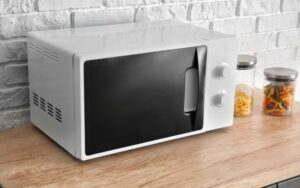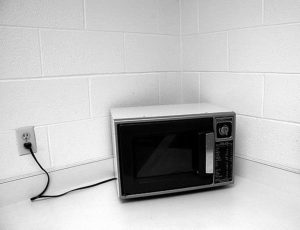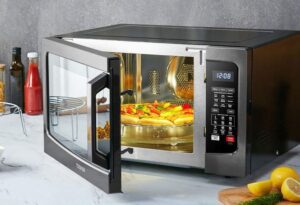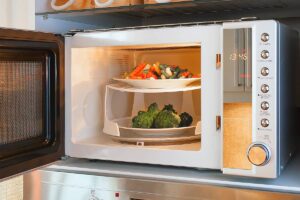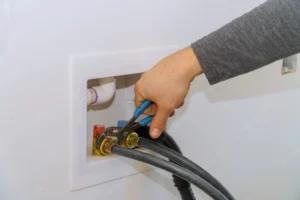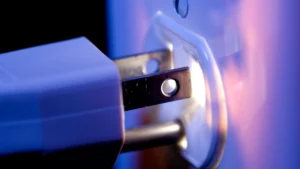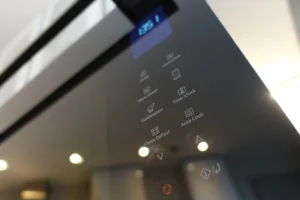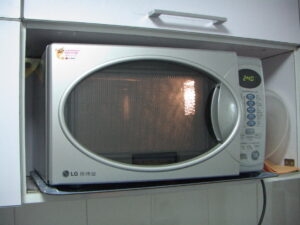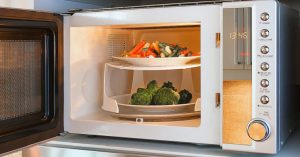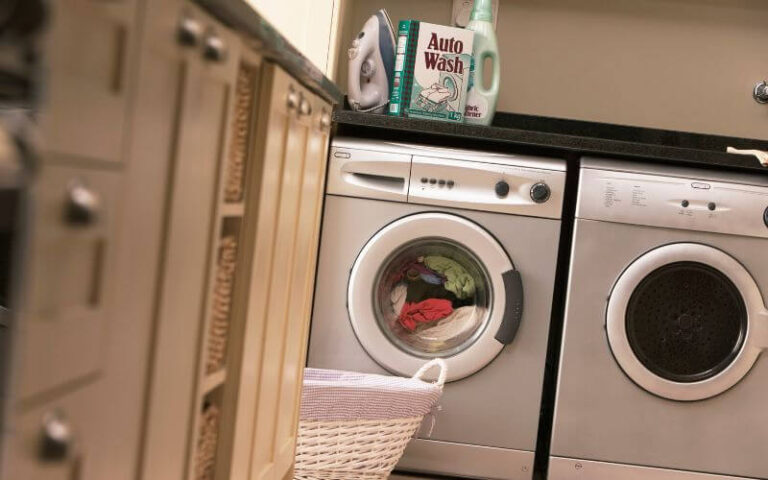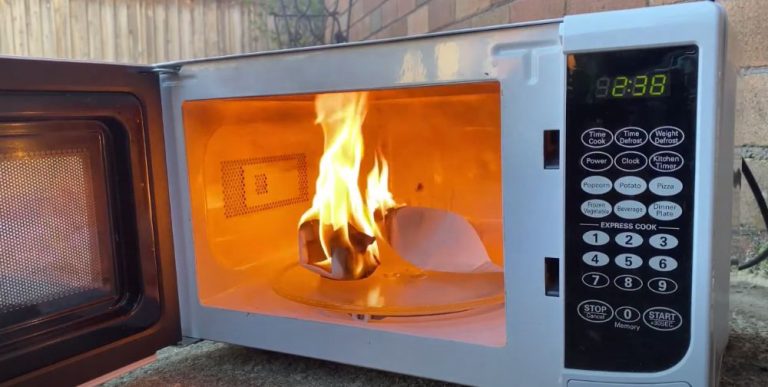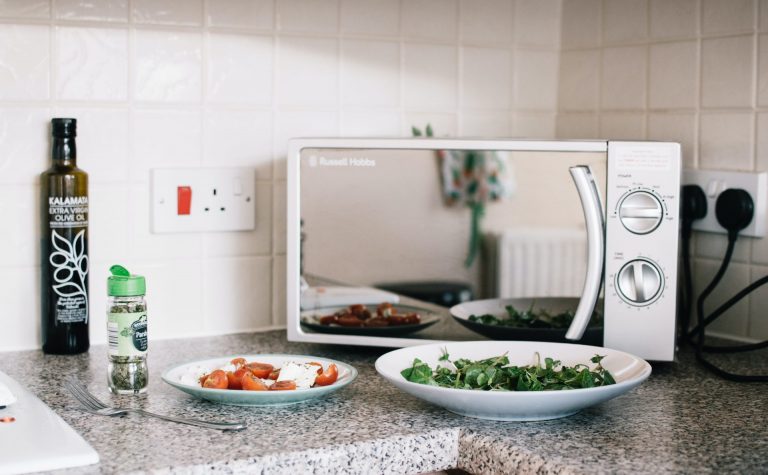5 Reasons That Microwave Plates Break!
Why do you have to keep replacing your microwave plates all the time?
Do you think the fault is yours, and there’s something you’re not doing right that’s making the microwave plates break quickly? Please read on to find a satisfactory answer.
Extreme temperatures can cause your microwave plates to break easily. When you remove the microwave plate after letting it heat up to a high degree, its chances of developing cracks and breaking are high. Also, the material of the microwave plate is important because that determines its tolerance to heat.
I’ve prepared this article to help you discover common factors that can make a microwave plate break easily.
In the end, you’ll know what temperature is best for your microwave plates and if you can have them fixed after breaking.
5 Reasons Microwave Plates Break In the Microwave

Numerous factors can make the plates in your microwave break; some of those factors are things you can avoid to ensure the plate doesn’t break.
Below are a few reasons why microwave plates break in the microwave.
Using an Old Plate
Using an old plate in your microwave isn’t advisable, as that will predispose the plate to break.
Old plates have plenty of moisture, causing rapid expansion and subsequent bursts when put in a microwave.
Type of Plate Material
The material of your microwave plate is crucial as it determines how tolerable it is to heat.
So if you recently did a swap, the breaking of the plate should be due to its material.
Hence, if you must change your microwave plate, get one with the same heat tolerance as that of the old microwave plate.
Uneven Heat
Uneven heat can cause the microwave plate to break, especially when one side gets heated up faster than the other.
To avoid this occurrence, manually rotate the plate in the microwave for even heat distribution.
Rapid Heating and Cooling
When you suddenly exchange temperatures of the plate, the likelihood of it breaking is more.
To avoid that, please try to keep the hot plate in the microwave after heating it.
Cracks In the Plate
If you’re using a glass plate, the microwaves can pass through it and cause small cracks or chips, leading to a sudden break.
However, the chances of that happening are less common than the other factors.
How Long Do Microwave Plates Last?
There’s no hard and fast rule about how long microwave plates last. A microwave plate should last as long as your microwave lasts, but some uncertainties cause it to break before time.
So, rather than worrying about how long the microwave plate can last, you should worry more about maintaining the plate.
That’s because, with good maintenance, the microwave plate will last for a reasonable time.
Also, there’s no specific time frame for a microwave plate to last, but there are certain things you can do to make it last longer.
Avoid Regular Dislocation of the Plate
Taking out a microwave plate all the time can predispose it to break, primarily due to poor handling.
So, if there’s no necessity to take out the microwave plate from the microwave, please leave it inside undisturbed.
Always Keep the Microwave Plate Clean
Proper maintenance, like regularly cleaning the microwave, can make it last longer because accumulated dirt can harm it.
However, while at that, ensure to wipe the plate inside the microwave; if you must take it out, do it with care close to the microwave.
Can You Fix a Broken Microwave Plate?
No, I wouldn’t advise you to fix a microwave plate because once it breaks, it can never be as good as its original.
A microwave plate must have an intact architecture to allow the microwaves to pass through undisturbed.
When the plate breaks, its architecture changes, resulting in an uneven heat distribution, further predisposing it to break.
Also, avoid using glue to fix the glass because that can track moisture and cause the plate to break.
So, when your microwave plate breaks, rather than fixing it, it’ll be best if you get a new one.
However, ensure the exact design as the previous one because using a different plate will still break.
All microwaves come with particular brands of plates for better tolerability to heat and effectiveness. It would be best if you also considered the cost of a replacement plate.
If replacing the microwave plate is close to the cost of a new one, it’ll be wise to consider the latter.
What Can I Use To Replace a Broken Microwave Plate?
The only thing you must use to replace a broken microwave plate is to get the same type as the old one.
That’s because every microwave comes with its unique plate that works and tolerates microwaves for even distribution.
Also, it’s possible to use the microwave to heat your food while you plan on getting a replacement for the broken microwave plate.
However, ensure that you do that for a limited time frame, as using the microwave without its glass can cause food to drip into the microwave.
How Long Should Plates Stay In a Microwave?
Ideally, plates should stay at most intervals of two minutes in the microwave. Leaving your plates to heat for a longer time, say 15 minutes, can damage the plate.
If you need to heat the meal for more than the ideal time frame, make sure you give stops in between to allow the plates to cool down before the next dose of heat.
That way, plates can last longer in the microwave and maintain their strength and architecture.
Heat damages plates fast, so you must know that putting your plate in the microwave is already a huge risk.
Can You Use Any Plate In a Microwave?
Most plates are microwave-safe, while a few aren’t; it’s paramount to know what some of these plates are so that you don’t predispose your microwave to spoil from using inappropriate plates.
However, to be safe, you can check your microwave label or user manual to see the complete list of plates you can and can’t use in the microwave.
This table enumerates the type of plates you can use in a microwave (microwave-tolerant plates) as against those (microwave-intolerant plates) that you can use.
| Microwave-tolerant Plates | Microwave-intolerant Plates |
|---|---|
| Ziploc bags | Cardboard |
| Paper towels | Styrofoam |
| Plastics | Metals including aluminum or stainless steel |
| Glass and Ceramics | |
| Paper plates |
From the above table, I’m sure you’re surprised that some of the wares you thought weren’t microwave-safe indeed are.
If you need clarification about the make of the plate, please, refrain from using it to maintain the functionality of your microwave.
What Temperature Is Best For Heating Microwave Plates?
Knowing the best temperature to heat your microwave plates is essential; although you want your meal warm, it is vital to do it correctly.
The first thing to do is to ensure that the plate has some moisture; that’ll allow the heat to dry up the water before reaching the plate so that it doesn’t break down due to too much heat.
An ideal temperature best for your microwave is around 140-190°F. Don’t be tempted to raise the temperature beyond that level, as the plate may become too hot to touch.
Additionally, the expected timing of the microwave using that temperature is 5-15 minutes.
Anything above that without stopping in between will cause the plate to crack and break.
Also, make sure to leave your plate out of a preheated oven before switching it to the microwave; that can distort its architecture and cause it to break due to temperature mismatch.
FAQs
Why Does It Mean When a Plate Breaks In the Microwave?
When a plate breaks in the microwave, it’s most likely that it has a hairline crack that you couldn’t see; the water that tracks in the crack can attract the microwaves and cause a break.
Can You Still Use a Microwave Without the Plate?
If getting a replacement plate isn’t feasible, you can go on ahead to heat your food without it but only for a short time.
How Can You Tell a Microwave-safe Plate From One That Isn’t?
Check for a label behind or at the bottom of the microwave for a list of microwave-safe plates.
Read Also
- 3 Reasons Your Whirlpool Microwave Display is Not Working!
- 5 Reasons That Microwave Plates Break!
- 5 Reasons Your Frigidaire Microwave Keeps Tripping Breaker!
- Can A Microwave Be Plugged Into Any Outlet? (Explained)
- Can You Microwave Things that Say Oven Only? (Explained)
- Can You Put Two Items in Microwave Together? (Read This First)



